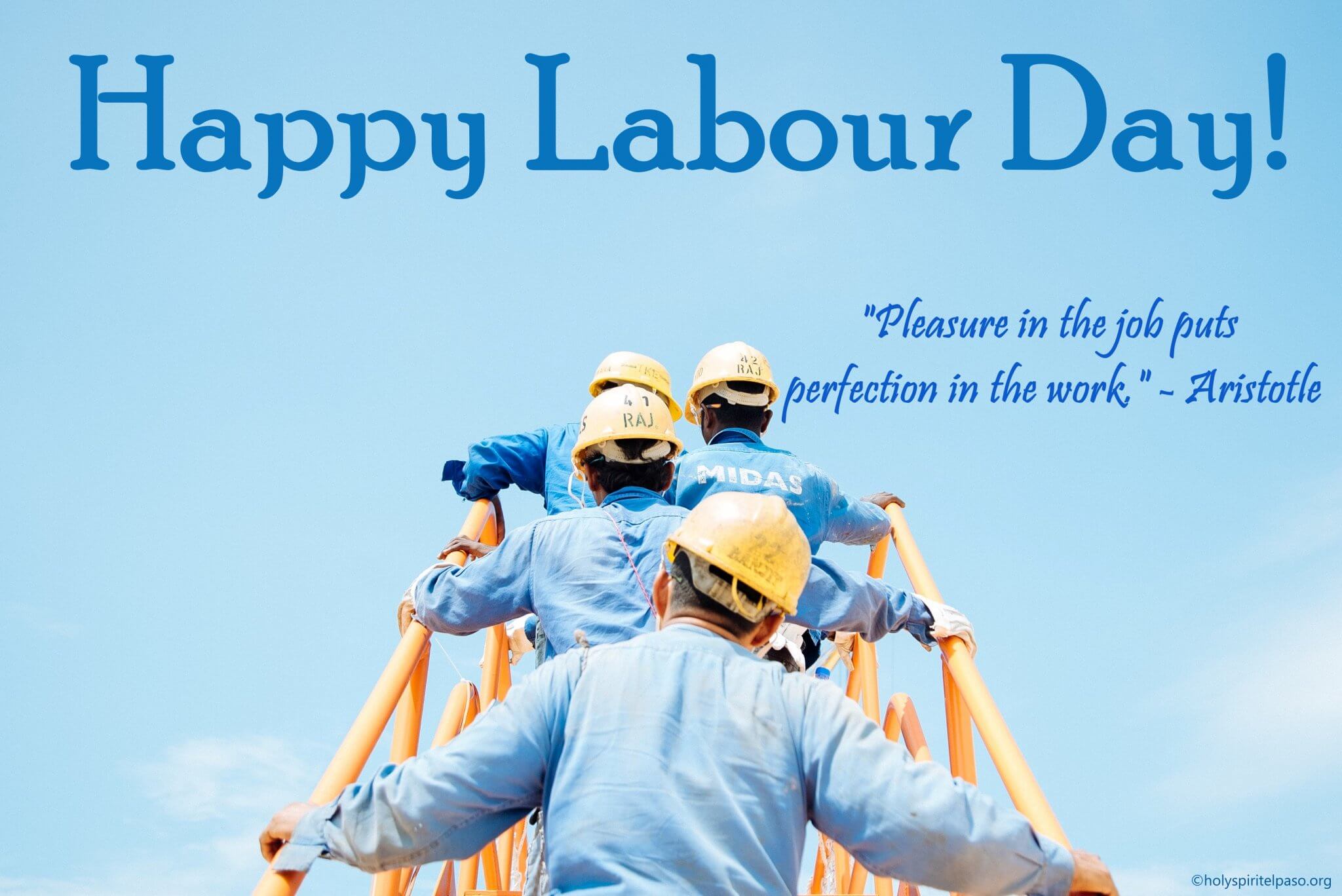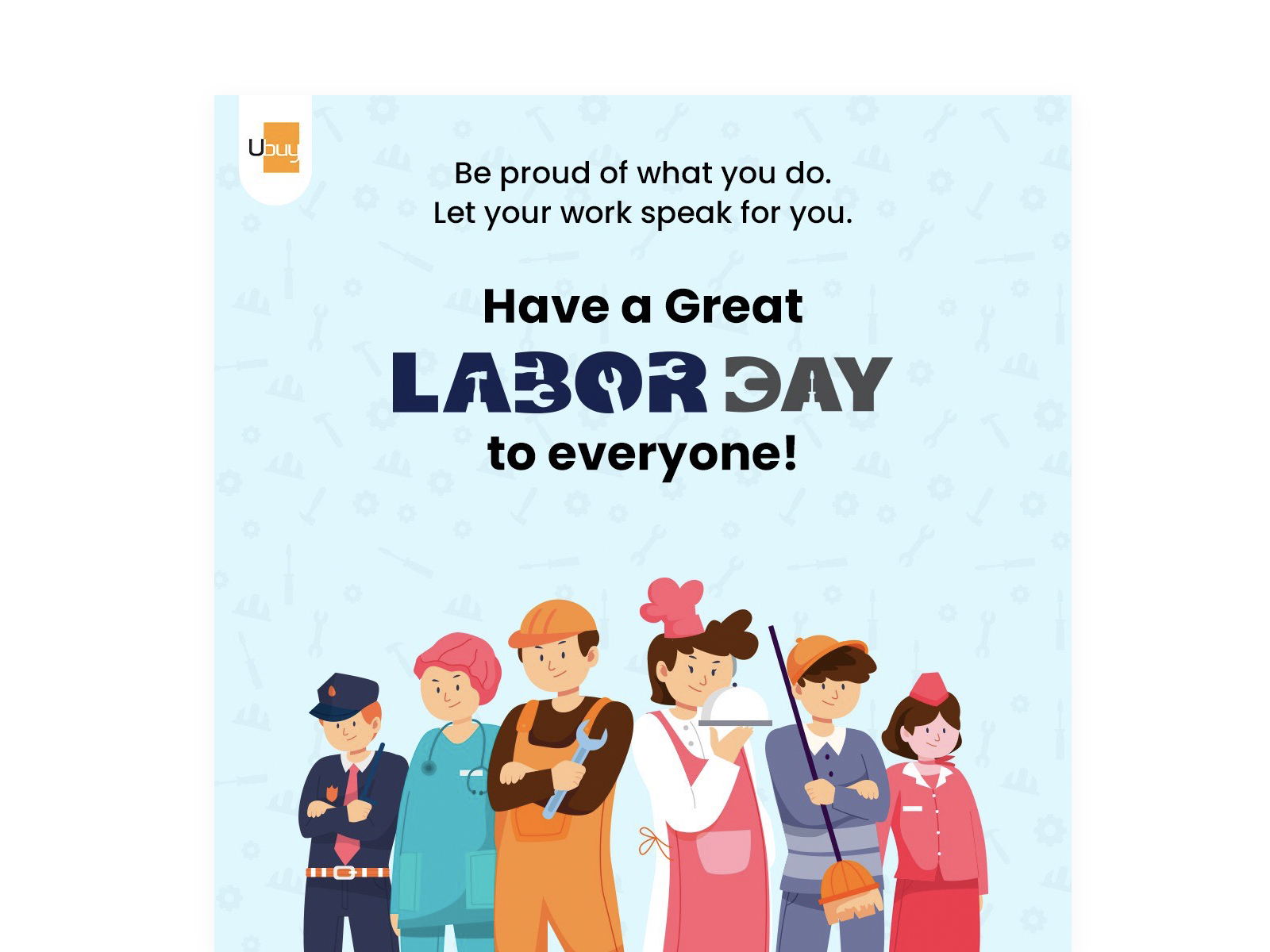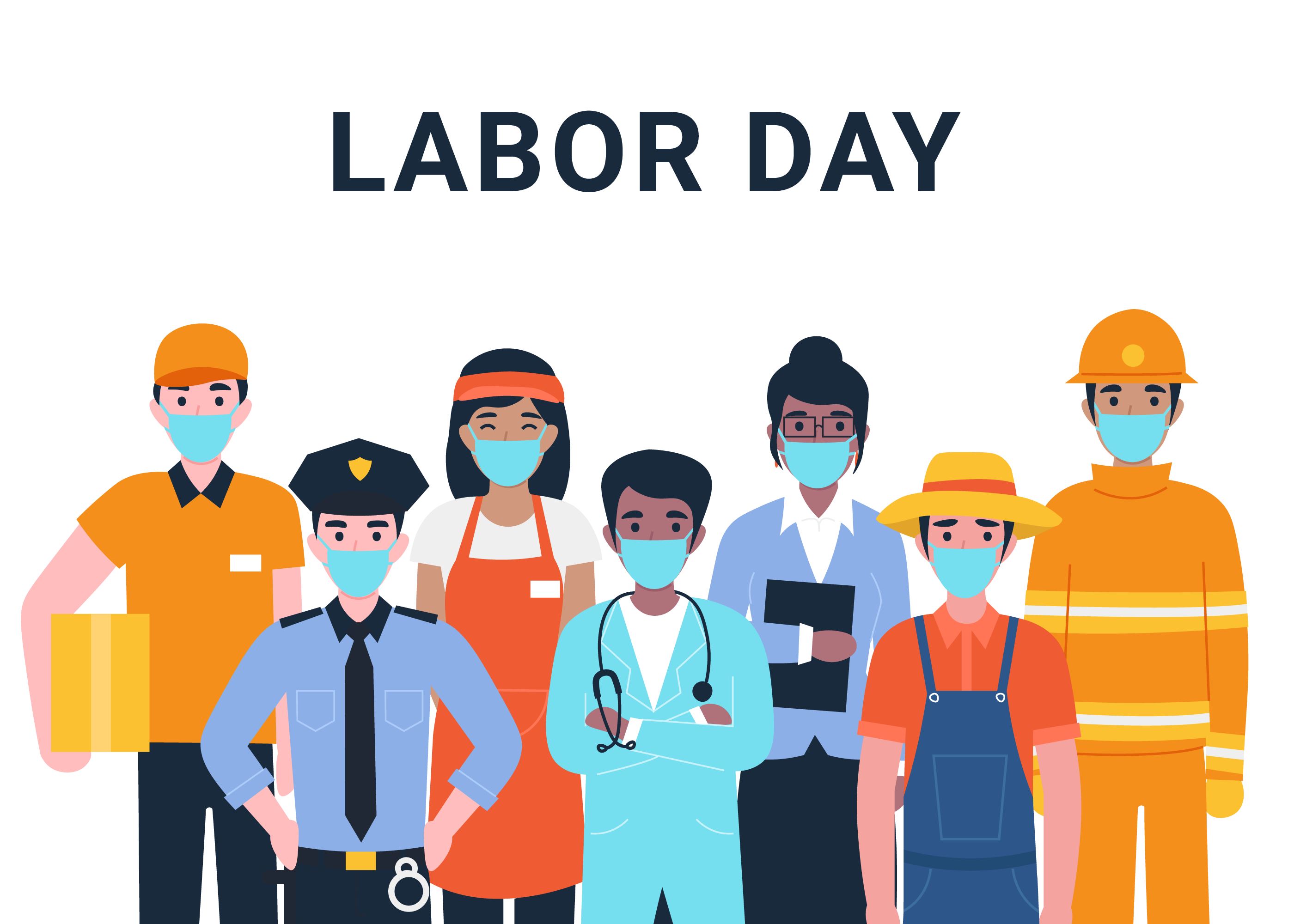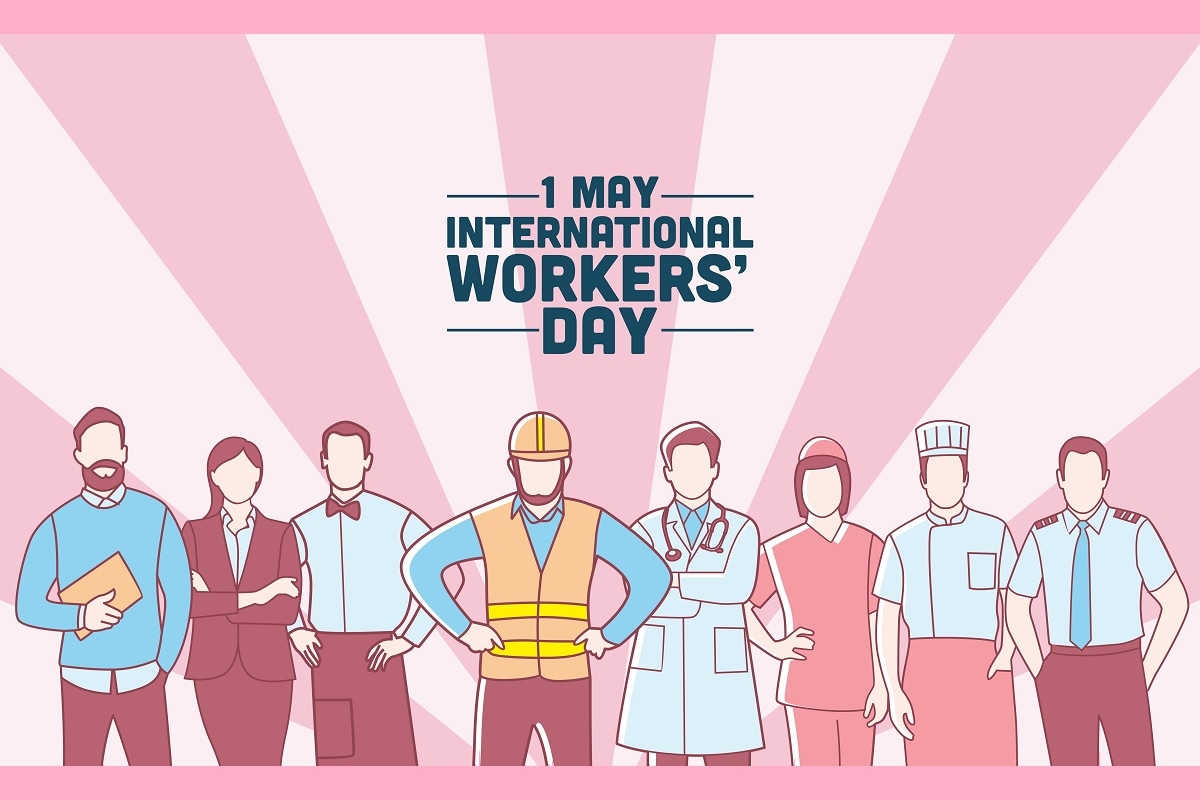Tag der Arbeit, also known as International Workers’ Day, is a global celebration of the contributions and struggles of the working class. Celebrated annually on May 1st, this holiday has a rich history and significance that extends beyond its origins as a labor movement commemoration.
From its humble beginnings to its widespread recognition, Tag der Arbeit has evolved into a day that not only honors workers’ rights but also fosters social solidarity, promotes cultural identity, and shapes labor policies around the world.
Historical Origins of Tag der Arbeit
Tag der Arbeit, celebrated on May 1st, has deep roots in the labor movements of the 19th century. It emerged as a day to recognize the struggles and achievements of workers worldwide.
Key Events and Figures
- 1884: The American Federation of Labor (AFL) called for a nationwide strike on May 1st to demand an eight-hour workday.
- 1886: The Haymarket Riot in Chicago, a violent clash between workers and police, became a turning point in the labor movement.
- 1889: The Second International, a socialist organization, declared May 1st as International Workers’ Day.
Spread of the Holiday
Tag der Arbeit gained momentum throughout Europe and beyond, becoming a symbol of labor solidarity and workers’ rights. It was officially recognized as a holiday in many countries in the early 20th century.
– Global Celebrations of Tag der Arbeit

Tag der Arbeit, also known as International Workers’ Day, is celebrated on May 1st in many countries around the world. It is a day to commemorate the achievements of the labor movement and to advocate for workers’ rights. The holiday has its roots in the late 19th century, when workers in the United States and Europe began to organize for better working conditions and an eight-hour workday.
Today, Tag der Arbeit is celebrated in a variety of ways around the world. In some countries, it is a day of rest and relaxation, while in others it is a day of protest and activism. In many countries, workers’ unions organize parades and rallies to demand better wages, benefits, and working conditions.
Economic Significance of Tag der Arbeit
Tag der Arbeit has significant economic implications, influencing labor markets, productivity, and economic growth.
Labor Market Participation
Tag der Arbeit can affect labor market participation rates. In some countries, it is a national holiday, resulting in reduced workforce availability. Conversely, in countries where Tag der Arbeit is not a holiday, it may encourage increased labor participation as workers seek to make up for lost income during the holiday period.
Productivity
The impact of Tag der Arbeit on productivity is complex. On the one hand, it provides workers with a much-needed break, which can lead to increased motivation and productivity upon their return to work. On the other hand, the holiday can disrupt production schedules and lead to temporary decreases in output.
Economic Growth
The overall impact of Tag der Arbeit on economic growth is difficult to determine. Some argue that the holiday provides a boost to the economy by stimulating consumer spending. Others contend that it can lead to a slowdown in economic activity due to reduced production and workforce availability.
Trade Unions
Trade unions play a crucial role in shaping the economic significance of Tag der Arbeit. They advocate for workers’ rights, including the right to paid time off, and have been instrumental in securing Tag der Arbeit as a national holiday in many countries.
Social and Cultural Impact of Tag der Arbeit
Tag der Arbeit holds immense social and cultural significance, fostering labor solidarity and promoting workers’ rights. It has played a crucial role in shaping social cohesion and cultural identity, particularly in countries with strong labor movements.
Role in Labor Solidarity and Workers’ Rights
Tag der Arbeit serves as a platform for workers to unite and advocate for their rights. It brings together labor unions, workers’ organizations, and individuals to raise awareness about labor issues, demand better working conditions, and promote social justice. Historically, the holiday has been instrumental in securing significant labor reforms, such as the establishment of minimum wage, paid leave, and improved workplace safety regulations.
Impact on Social Cohesion and Cultural Identity
Tag der Arbeit fosters a sense of community among workers and reinforces the importance of collective action. It provides an opportunity for people from diverse backgrounds to come together and celebrate the dignity of work. The holiday also contributes to cultural identity by recognizing the contributions of the working class to society and highlighting the struggles and achievements of workers throughout history.
Political Dimensions of Tag der Arbeit
Tag der Arbeit has significant political dimensions, closely intertwined with labor unions and political parties. It serves as a platform to advocate for workers’ rights, promote social justice, and shape labor policies.
Association with Labor Unions
Tag der Arbeit is deeply associated with labor unions, which use the holiday to mobilize their members, raise awareness about labor issues, and demand better working conditions. Unions organize rallies, parades, and speeches to highlight the contributions of workers and push for policy changes that benefit the working class.
Role in Shaping Labor Policies
Tag der Arbeit has played a crucial role in shaping labor policies and promoting social justice. Throughout history, the holiday has been used to advocate for various labor reforms, including the establishment of minimum wages, paid time off, and safe working conditions. By raising awareness and mobilizing public support, Tag der Arbeit has contributed to the passage of laws that protect and empower workers.
Political Parties and the Holiday
Political parties often use Tag der Arbeit to connect with the working class and promote their agendas. Left-leaning parties typically emphasize the importance of workers’ rights and social justice, while right-leaning parties may focus on economic growth and job creation. By aligning themselves with the values associated with Tag der Arbeit, political parties aim to gain support from a large and influential demographic.
Contemporary Challenges and Opportunities for Tag der Arbeit

In the modern era, Tag der Arbeit faces both challenges and opportunities as the labor landscape continues to evolve. Globalization and technological advancements are transforming the nature of work, posing new questions about the relevance and meaning of the holiday.
One of the challenges is the increasing globalization of the economy. With businesses operating across borders and production processes being outsourced to different countries, the traditional concept of a national workforce is becoming less clear. This raises questions about who should be entitled to the benefits and protections associated with Tag der Arbeit.
Another challenge is the impact of technological advancements. Automation and other technological innovations are changing the nature of work, leading to concerns about job displacement and the need for workers to adapt to new skills and industries. This raises questions about how Tag der Arbeit can continue to represent the interests of workers in an increasingly automated and digital economy.
Opportunities for Tag der Arbeit
Despite these challenges, Tag der Arbeit also presents opportunities for renewal and relevance. By embracing the changing nature of work, the holiday can continue to play an important role in promoting workers’ rights and well-being.
One opportunity is to focus on the broader concept of work. Rather than solely emphasizing traditional employment relationships, Tag der Arbeit can also recognize the contributions of unpaid work, such as caregiving and community service. This would reflect the changing nature of work and the growing recognition of the value of all forms of labor.
Another opportunity is to use Tag der Arbeit as a platform for promoting social justice and equity. By highlighting the challenges faced by marginalized workers, such as immigrants, women, and low-wage workers, the holiday can help to raise awareness and advocate for policies that address these issues.
Labor Unions and Tag der Arbeit

Labor unions play a pivotal role in organizing and celebrating Tag der Arbeit. The holiday holds immense significance for union members, serving as a testament to the collective power of workers and their unwavering commitment to social justice and economic equality.
Significance of Tag der Arbeit for Union Members
Tag der Arbeit provides a platform for union members to come together, celebrate their achievements, and reaffirm their solidarity. It serves as a reminder of the struggles and sacrifices made by workers throughout history to secure better working conditions, fair wages, and workplace protections.
Impact on Labor-Management Relations
Tag der Arbeit has a significant impact on labor-management relations. It creates an opportunity for dialogue and collaboration between unions and employers, fostering mutual respect and understanding. The holiday encourages constructive engagement and promotes a cooperative approach to addressing workplace issues.
Key Events and Activities
Tag der Arbeit celebrations typically include a range of events and activities, such as:
- Parades and demonstrations showcasing the strength and unity of the labor movement
- Speeches by union leaders and political figures highlighting the importance of workers’ rights
- Concerts, festivals, and other cultural events that celebrate the contributions of working people
- Educational forums and workshops that address current labor issues and challenges
Quotes from Union Leaders and Members
Union leaders and members have often expressed the importance of Tag der Arbeit in powerful words:
“Tag der Arbeit is a day to celebrate the dignity of work and the power of collective action.” – AFL-CIO President Richard Trumka
“On Tag der Arbeit, we honor the sacrifices of those who came before us and recommit ourselves to the fight for justice in the workplace.” – SEIU President Mary Kay Henry
Historical Origins and Evolution of Tag der Arbeit
The origins of Tag der Arbeit can be traced back to the late 19th century, when workers in Europe and North America began organizing for better working conditions. The first official Tag der Arbeit was celebrated in 1889, and it has since become a global holiday recognized in over 100 countries.
Over time, Tag der Arbeit has evolved to reflect the changing nature of work and the challenges faced by workers. It has become a symbol of not only labor rights but also social justice, economic equality, and human dignity.
– Discuss the historical origins of Tag der Arbeit and its significance in the labor movement.
Tag der Arbeit, also known as International Workers’ Day or Labour Day, has its roots in the late 19th century. The concept of a day dedicated to celebrating workers and their contributions to society emerged amidst widespread industrialization and the rise of labor movements.
During the Industrial Revolution, workers faced harsh working conditions, low wages, and limited rights. Labor organizations and trade unions emerged as a means for workers to collectively advocate for their rights and improve their working conditions. These organizations played a crucial role in shaping the traditions and goals of Tag der Arbeit.
In 1889, the Second International, an international organization of socialist and labor parties, declared May 1st as a day of international solidarity for workers. The date was chosen to commemorate the Haymarket affair, a labor protest in Chicago that resulted in the deaths of several workers and police officers.
Tag der Arbeit quickly gained popularity and became a symbol of workers’ struggles for better working conditions, fair wages, and social justice. It became a day for workers to unite, demand their rights, and celebrate their contributions to society.
Tag der Arbeit and Labor History
Tag der Arbeit plays a pivotal role in preserving and celebrating the rich history of labor movements, commemorating the struggles and achievements of workers throughout the years. It serves as a testament to the collective efforts and sacrifices made by laborers to secure better working conditions, fair wages, and social justice.
The holiday honors historical events and figures that have shaped the labor landscape. One such event is the Haymarket Affair of 1886 in Chicago, where a labor rally turned violent, resulting in the deaths of several workers and police officers. The incident became a rallying point for the labor movement and led to the establishment of May 1st as a day of remembrance and solidarity.
Commemorated Figures
Tag der Arbeit also commemorates notable labor leaders and activists who dedicated their lives to improving the lives of workers. These include:
- Samuel Gompers, founder of the American Federation of Labor (AFL)
- Eugene V. Debs, a prominent socialist and labor organizer
- Mary Harris Jones, known as “Mother Jones,” who fought for the rights of miners and other workers
- Cesar Chavez, a Mexican-American labor leader who advocated for the rights of farmworkers
International Labor Day and Tag der Arbeit
International Labor Day, also known as May Day, is a global celebration of workers and the labor movement, held annually on May 1st. Tag der Arbeit, celebrated in Germany and a few other countries, is a similar holiday observed on May 1st. Both holidays share common origins in the labor movement and recognize the contributions of workers to society.
Similarities
Tag der Arbeit and International Labor Day share several similarities:
- Historical Origins: Both holidays have roots in the labor movement and the fight for workers’ rights in the 19th century.
- Date: Both holidays are celebrated on May 1st.
- Recognition of Workers: Both holidays recognize and celebrate the contributions of workers to society.
Differences
Despite their similarities, Tag der Arbeit and International Labor Day have some key differences:
- Geographic Scope: International Labor Day is celebrated globally, while Tag der Arbeit is primarily observed in Germany and a few other countries.
- Historical Context: Tag der Arbeit has a specific historical context tied to the German labor movement, while International Labor Day is associated with the broader global labor movement.
- Celebrations: International Labor Day often involves parades, rallies, and political speeches, while Tag der Arbeit celebrations typically focus on family gatherings and outdoor activities.
Global Impact
Both Tag der Arbeit and International Labor Day have had a significant global impact on labor movements and workers’ rights. They have raised awareness about workers’ issues, promoted social justice, and contributed to the improvement of working conditions and benefits for workers worldwide.
Discuss the history and significance of Tag der Arbeit as a day for celebrating workers’ rights and social justice.
Tag der Arbeit, also known as International Workers’ Day or Labor Day, is a global holiday celebrated annually on May 1st to commemorate the struggles and achievements of workers’ movements worldwide. Its historical roots can be traced back to the late 19th century, when labor unions and workers’ organizations fought for better working conditions, fair wages, and reduced work hours.
The significance of Tag der Arbeit lies in its recognition of the contributions and sacrifices made by workers in shaping societies and economies. It serves as a reminder of the ongoing struggle for social justice and the importance of protecting workers’ rights and promoting workplace equality.
Historical Origins
The origins of Tag der Arbeit can be traced back to the 1880s, when the American Federation of Labor (AFL) and other labor organizations called for a general strike on May 1st, 1886, to demand an eight-hour workday. The strike, which began in Chicago, Illinois, was met with violent repression by police and resulted in the deaths of several workers. This event became known as the Haymarket Affair and sparked a wave of protests and solidarity among workers worldwide.
In 1889, the International Socialist Congress, held in Paris, declared May 1st as an international day of protest and solidarity for workers. The first official Tag der Arbeit was celebrated in 1890 in various countries, including the United States, Canada, and several European nations.
Global Celebrations, Tag der Arbeit
Tag der Arbeit is celebrated in over 80 countries around the world, each with its own unique traditions and customs. In many countries, it is a public holiday where workers are given the day off. Some common ways of observing Tag der Arbeit include:
- Parades and demonstrations by labor unions and workers’ organizations
- Speeches and rallies by political leaders and activists
- Concerts, festivals, and other cultural events
- Educational campaigns and workshops on workers’ rights and social justice
– Analyze the historical evolution of Tag der Arbeit’s association with sustainability and fair labor practices.
Tag der Arbeit, also known as International Workers’ Day, has a rich history of advocating for workers’ rights and social justice. In recent years, the day has also become increasingly associated with sustainability and fair labor practices. This evolution reflects a growing recognition of the importance of environmental and social issues in the labor movement.
- The early labor movement was primarily focused on economic issues, such as wages, hours, and working conditions. However, as the 20th century progressed, labor unions began to take a more active role in promoting social and environmental causes.
- In the 1970s, the United Nations Environment Programme (UNEP) launched the “Workers for a Healthy Environment” campaign. This campaign aimed to raise awareness of environmental issues among workers and to encourage them to take action to protect the environment.
- In the 1980s, the International Labour Organization (ILO) adopted a number of conventions and recommendations on environmental protection and sustainable development. These conventions and recommendations have helped to promote fair labor practices and sustainable development in the workplace.
Tag der Arbeit and Art
Tag der Arbeit has served as a potent muse for artists, inspiring a rich body of artwork, music, and literature that captures the struggles, aspirations, and triumphs of the labor movement. These artistic expressions not only commemorate the holiday but also provide a profound reflection on the social and economic forces that shape our world.
Throughout history, artists have employed their talents to depict the plight of workers, often highlighting the harsh conditions and injustices they faced. Paintings, sculptures, and photographs have immortalized the toil and sacrifices of laborers in factories, mines, and fields.
Visual Arts
- American painter Jacob Lawrence created a series of paintings titled “The Migration Series” in the 1940s, which depicted the experiences of African Americans migrating from the rural South to the industrial North. One of the paintings, “Industry,” portrays a bustling factory floor, capturing the relentless pace and physical demands of industrial labor.
- German artist Käthe Kollwitz’s graphic prints and sculptures often explored themes of social justice and the plight of the working class. Her work, such as “The Weavers’ Revolt” (1893), depicted the struggles of textile workers against exploitation and poverty.
- Mexican muralist Diego Rivera created large-scale murals that celebrated the contributions of workers to society. His mural “Detroit Industry” (1932-33) depicts the vibrant and chaotic energy of the Ford Motor Company’s assembly lines, highlighting the role of workers in industrial production.
Music
- Woody Guthrie, an American folk singer, wrote and performed numerous songs about the experiences of workers, particularly during the Great Depression. His song “This Land Is Your Land” (1940) became an anthem for the labor movement, calling for economic justice and equality.
- The protest songs of Pete Seeger, another American folk singer, also resonated with the labor movement. His song “We Shall Overcome” (1948) became a rallying cry for civil rights and social justice, inspiring workers and activists alike.
- Labor unions have often commissioned songs to commemorate Tag der Arbeit and promote their causes. For example, the International Workers of the World (IWW) created the song “Solidarity Forever” in 1915, which has become a staple of labor protests and rallies.
Literature
- Upton Sinclair’s novel “The Jungle” (1906) exposed the unsanitary and exploitative conditions in the meatpacking industry in Chicago. The book’s graphic descriptions of worker injuries and mistreatment sparked public outrage and led to reforms in food safety regulations.
- John Steinbeck’s novel “The Grapes of Wrath” (1939) depicted the struggles of migrant farmworkers during the Dust Bowl. The book highlighted the economic disparities and social injustices faced by workers, particularly during times of economic crisis.
- Studs Terkel’s oral history “Working” (1974) collected interviews with American workers from various occupations and backgrounds. The book provided a diverse and personal account of the experiences and perspectives of working people.
Tag der Arbeit and Media

Media plays a pivotal role in shaping public understanding of Tag der Arbeit, influencing awareness and perception of the holiday’s significance. News outlets, entertainment platforms, and social media collectively provide a lens through which the holiday is portrayed and interpreted.
News Coverage
News coverage of Tag der Arbeit often focuses on the historical origins of the holiday, labor union activities, and the ongoing struggles faced by workers. By highlighting labor rights, working conditions, and social justice issues, news media raises awareness about the importance of Tag der Arbeit.
However, news coverage can sometimes be influenced by political biases or corporate interests, potentially skewing the portrayal of the holiday. Critical analysis of news reports is crucial to ensure accurate and balanced information.
Entertainment and Social Media
Entertainment media, such as movies and TV shows, often depict Tag der Arbeit as a day of celebration and camaraderie among workers. Social media provides a platform for individuals to share their experiences, perspectives, and support for labor rights on Tag der Arbeit.
While these platforms can amplify the voices of workers and promote solidarity, they can also perpetuate stereotypes or inaccuracies about the holiday. Social media echo chambers may reinforce certain narratives, potentially limiting diverse perspectives.
Evolution of Media Coverage
Media coverage of Tag der Arbeit has evolved over time, reflecting changing societal attitudes towards labor and social justice. In the past, coverage often emphasized the confrontational aspects of labor struggles, while contemporary coverage tends to focus on the broader social and economic implications of the holiday.
Technological advancements have also influenced media coverage, with the rise of social media and citizen journalism providing new avenues for diverse perspectives to be heard.
Tag der Arbeit and Future of Work
Tag der Arbeit has historically celebrated the achievements of workers and labor movements. As the future of work evolves, the holiday may adapt to reflect changing societal values and priorities.
Technological Advancements and Changing Labor Markets
Automation and remote work are transforming the workplace, leading to potential job displacement and the rise of the gig economy. Tag der Arbeit could become a platform to address these challenges, promoting policies that support workers in the changing labor market.
Evolving Significance of Tag der Arbeit
The holiday could evolve to focus on issues such as fair wages, job security, and work-life balance. It could also become a time to celebrate the contributions of workers in various sectors, including those in the gig economy and the care economy.
Adapting to Changing Values
As societal values shift towards sustainability and social justice, Tag der Arbeit could become a vehicle for promoting these ideals in the workplace. It could encourage businesses to adopt fair labor practices, reduce their environmental impact, and prioritize worker well-being.
Potential Changes to Celebrations
The way Tag der Arbeit is celebrated may also change in the future. Virtual events, online campaigns, and social media activism could become more prevalent as the holiday adapts to the digital age.
Last Recap
As we reflect on the historical and contemporary significance of Tag der Arbeit, it is essential to recognize the ongoing challenges and opportunities facing the labor movement. By embracing innovation, promoting social justice, and advocating for workers’ rights, we can ensure that Tag der Arbeit remains a powerful symbol of unity, progress, and the unwavering spirit of the working class.
Detailed FAQs
What is the historical significance of Tag der Arbeit?
Tag der Arbeit commemorates the Haymarket Affair in Chicago in 1886, where workers protested for an eight-hour workday and faced violent repression.
How is Tag der Arbeit celebrated around the world?
Celebrations vary by country, but typically include parades, speeches, festivals, and labor union gatherings.
What is the economic impact of Tag der Arbeit?
Tag der Arbeit can lead to increased consumer spending, tourism, and reduced productivity due to workers taking the day off.